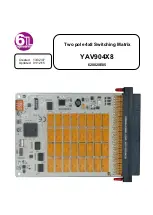
2-386
Catalyst 3750 Metro Switch Command Reference
OL-9645-10
Chapter 2 Catalyst 3750 Metro Switch Cisco IOS Commands
random-detect precedence
Usage Guidelines
WRED is a congestion-avoidance mechanism that slows traffic by randomly dropping packets when
congestion exists. WRED reduces the chances of tail drop by selectively dropping packets when the
egress port begins to show signs of congestion. By dropping some packets early rather than waiting until
the queue is full, WRED does not drop large numbers of packets at once.
Use the
random-detect precedence
command only in a hierarchical policy map attached to an ES port.
You can use this command only in class-level classes.
You must configure the
bandwidth
or the
shape
policy-map class configuration command before you
configure either the
queue-limit
or the
random-detect
policy-map class configuration command in a
class policy.
You can define a class policy to use either tail drop or WRED packet drop by using either the
queue-limit
policy-map class configuration command or the
random-detect
policy-map class configuration
command, respectively. You cannot use the
queue-limit
and
random-detect
commands in the same
class policy, but they can be used in two class policies in the same policy map.
You cannot use the
bandwidth
,
queue-limit
,
random-detect
, and the
shape
policy-map class
configuration commands with the
priority
policy-map class configuration command in the same class
within the same policy map. However, you can use these commands in the same policy map.
You must enter the
random-detect precedence-based
command before specifying the values with the
random-detect precedence
ip-precedence min-threshold max-threshold mark-prob-denominator
command.
If you want WRED to ignore the precedence when deciding which packets to drop, enter the
random-detect precedence
command with the same parameters for each precedence. Remember to use
reasonable values for the minimum and maximum thresholds.
Set the
min-threshold
value high enough to maximize the link usages. If the minimum threshold is too
low, packets might be dropped unnecessarily, and the transmission link is not fully used. The difference
between the maximum threshold and the minimum threshold should be large enough to avoid global
synchronization of TCP hosts. This can occur as multiple TCP hosts reduce their transmission rates. If
the difference between the maximum and minimum thresholds is too small, many packets might be
dropped at once, resulting in global synchronization.
To return to policy-map configuration mode, use the
exit
command. To return to privileged EXEC mode,
use the
end
command.
lists the default minimum threshold value for each IP Precedence.
Table 2-16
Default WRED Minimum Threshold Values
IP Precedence
WRED Minimum Threshold Value
0
9/18
1
10/18
2
11/18
3
12/18
4
13/18
5
14/18
6
15/18
7
16/18
RSVP
17/18
















































